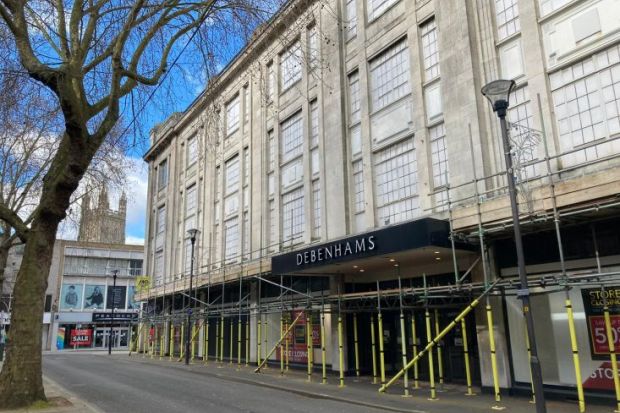The high street is dead, we are told. What Amazon started, the global pandemic has finished. Online shopping, initially just a convenience for those with especially busy lives, became a necessity for all as non-essential physical shops closed. Many of them – the UK’s Thorntons, Topshop, Dorothy Perkins and Debenhams among them – will never reopen. Those that do will struggle to draw back shoppers now habituated into one-click purchasing.
Many observers have predicted the same fate for universities. Once given a taste for learning from home, the argument goes, students will be reluctant to re-embrace the hassle of attending sessions in person. And digital disrupters will be quick to provide online instruction at a fraction of the price charged by legacy bricks-and-mortar institutions.
Yet the high street is not dead: it is evolving. While the lockdown may have hastened the long-term decline of some chains, others are looking to the future with more confidence. The key to success seems to lie in offering an experience that cannot be replicated by the simple click-and-deliver model: a “bricks and clicks” model combining the best of both digital and physical environments.
Still, the days when entire central districts were given over to mass retail and office work may well be over. Many civic authorities are now looking to transform them into hubs of community activity, entertainment and social adventures.
But what of the traditional campus-based university? Well, it is not dead either. In fact, unlike the high street experience of crowded shops, heavy bags and creaking transport systems, the physical university experience is in great demand. And why? Because the “product” that universities are selling is not a degree: it is the campus-based experience that leads to a degree – but also to lifelong friendships, social networks and personal growth. While a degree can be packaged up and delivered online, it is not so easy to do the same with the wrap-around experience of student life.
None of this is to say that change is unwelcome. The higher education sector ordinarily tends towards evolution over revolution, but the pandemic has shown the value of online delivery and some element of it seems certain to be here to stay. Blended learning, the educational equivalent of “bricks and clicks”, will continue to have its part to play, too – where it is the best pedagogic fit for the content and learning aims.
The logical next step is to combine the vibrancy of university life with local authorities’ efforts to resurrect moribund central districts. At the University of Gloucestershire, we have recently picked up that opportunity – and the challenge that goes with it – by purchasing the iconic and much-loved Debenhams building in central Gloucester. Our intention is to turn this five-storey Art Deco building into 20,000 square metres of attractive, modern spaces for teaching and learning.
We have literally bought a shop window, and this will enable us to open the life of the university to a broader public. We’re still considering which combination of courses should be located there, but whatever the final decision, this new campus will be a far cry from an inaccessible, wisteria-clad cloister, as beautiful as it is out of reach to most people. There are myriad opportunities to create dual-use facilities for the community and the university, offering city-centre access to learning, well-being, enterprise and culture: precisely the areas most civic leaders are targeting.
Our rapidly expanding programmes in nursing and allied health are among the subject options being explored: locating them in the Debenhams building would enable us to provide health and well-being facilities that could enrich the lives of local people as well as our students and staff. Computing and engineering are also on the table given the proximity of Gloucester’s developing digital quarter.
A recent UPP Foundation report suggested five priorities for universities in their contribution to the government’s levelling-up agenda, and we believe we can deliver on all five with our development of the Debenhams building. These are town centre regeneration, jobs and economic localism, boosting educational attainment, research and development of the local area, and support for the NHS. The excitement I feel for this project is therefore not simply about the opportunities for the university, but the opportunities for the university to be a true local asset.
The high street is not dead, and neither has the campus-based university died, but their futures are now more entwined than ever before. Universities across the UK and beyond must embrace their role in helping regenerate towns and cities.
Matthew Andrews is university secretary and registrar of the University of Gloucestershire.
Register to continue
Why register?
- Registration is free and only takes a moment
- Once registered, you can read 3 articles a month
- Sign up for our newsletter
Subscribe
Or subscribe for unlimited access to:
- Unlimited access to news, views, insights & reviews
- Digital editions
- Digital access to THE’s university and college rankings analysis
Already registered or a current subscriber? Login









